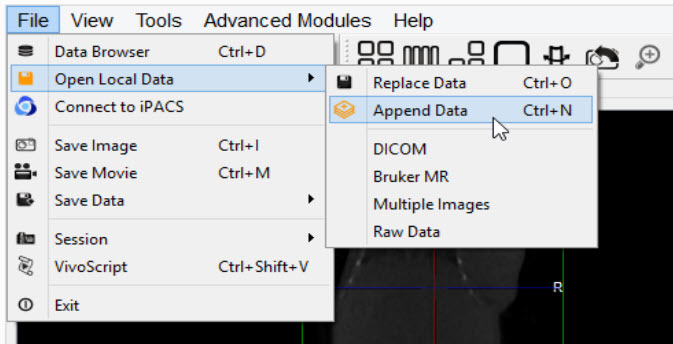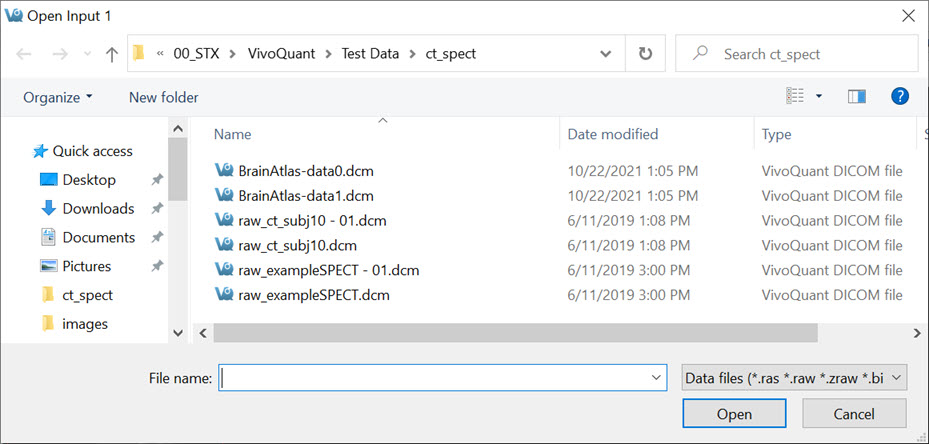The second data set loaded into VivoQuant is called the Input data and refers to the SPECT data. When loading multiple data sets from the Data browser, VivoQuant recognizes SPECT/PET data and automatically sets it as the input file. For dual isotope imaging, two input data sets can be added simultaneously. VivoQuant is capable of handling several file formats.
Getting There
There are different methods for appending data. The first method is to use the “Append Data” ![]() thumbnails in the Main Window.
thumbnails in the Main Window.

The second method is to go to File > Append Data.

The third method is to use the keyboard shortcut Ctrl+N to load input 1, and Ctrl+Shift+N to load additional inputs. For more on keyboard shortcuts in VivoQuant, please see Keyboard Shortcuts.
Function
Selection of the Append Data option opens a navigation window from which the input data set may be selected.

File Formats
VivoQuant can handle a variety of file formats. The default options include:
- DICOM: *.dcm, *.dicom, 1.*
- TRaster: *.ras, *.res., *.bin
- Raw: *.raw
- Image Files: *.png, *.tif, *.tiff, *.jpg, *.jpeg, *.bmp
- Other: *.img, *.nii, *.mhd, *.mha, *.fdf, *.dc3, *.vol
The navigation window also provides an option for displaying All Files, without specifying any of the above formats.